Shipping container home builders are an increasingly familiar sight in parts of South Africa where city regulations do not apply. Hence they make perfect farmsteads and superior accommodation in rural areas and informal settlements. Elsewhere, municipal authorities are still catching up with the new technology so special permission is required.
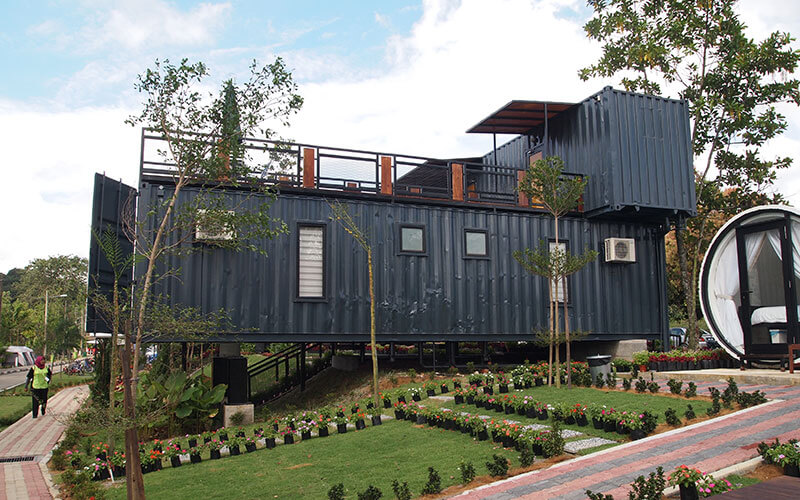
Inspect Your Future Home Before You Buy: Intermodal shipping containers have a tough time as they travel the seven seas, and ride on railways and roads to the four corners of the earth. Some are in surprisingly good shape except for light surface rust. Others are badly dented with weakened welds. Insist the seller lifts your container up with a crane so you can check the underside.
Understand How Structural Integrity Works: A shipping container is a box with rigid doors adding extra strength. There is no internal cross-bracing. Hence it follows cutting openings without careful thought could weaken the design. Ask your container supplier for advice. It’s their business, they should know.
Begin Your Upgrade with Thermal Insulation: Experienced shipping container home builders know intermodal container insulation is limited. They begin their work by spraying foam on the inside walls that double as a flame retardant. Then they fit a false ceiling inside that vents through the roof and feeds power to the overhead lights. Finally, they fit a slightly raised floor to their new home.
Use a Single Contractor for the Entire Project: Project-managing the conversion using multiple contractors works well if you understand the various trades. If not, they could run rings around you by blaming each other for defects. If you are unsure, find a decent shipping container supplier who can manage the whole job. Even better, have them do the conversion for you, and deliver a complete home to your site.
Then Let Your Imagination Run Riot: Experienced shipping container home builders provide the basics. Then it’s up to you to add the furniture and the drapes. Use some of your savings, compared to brick and mortar to spoil your family just a little. How about buying that home entertainment centre you always wanted?
An entry-level shipping container home builder new to the game can make a difference in their family’s lives with this brilliant technology, and things can happen fast with the right provider. Explore more ideas through these selected posts from our popular blog.
Selected Posts:
We have to be precise about the length of every 20ft container we supply. That’s because they have to fit on top of each other and squeeze easily into tight spaces. There were freight containers in the UK in the 1830’s for transferring coal from railways to horse-drawn carts.
However they only really took off in the 1950’s after the U.S. Army developed rigid steel containers with lifting rings. Hence container lengths measure in feet not meters.
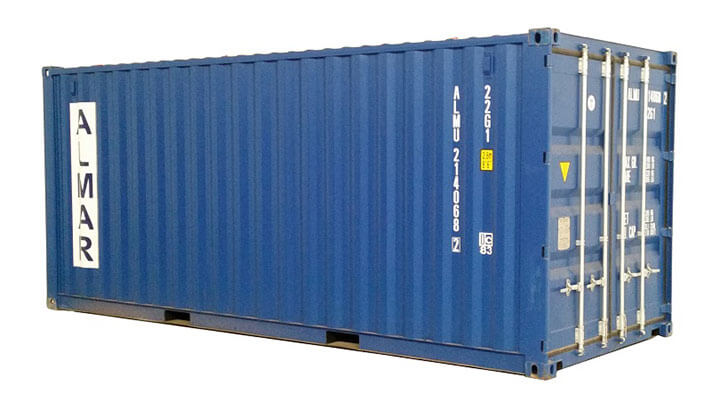
The 20ft container is the smallest in the standard range. Thus this container design is popular for transporting goods to locations with less sophisticated lifting and carrying equipment. We call them intermodal containers because they can travel in different modes of transport.
There are other names for these amazing devices that can travel by ship and rail and truck. These include cargo / freight container, iso container, shipping / sea / ocean container, container van, sea can, or just container.
Every ounce of energy we use contributes to greenhouse gas, and humans are currently causing too much of it. Moreover, the same applies to building construction. Our lightweight 20ft containers are in aluminium because this considerably reduces lifting and transportation costs. Moreover when their intermodal days are over they find other uses as transportable buildings.
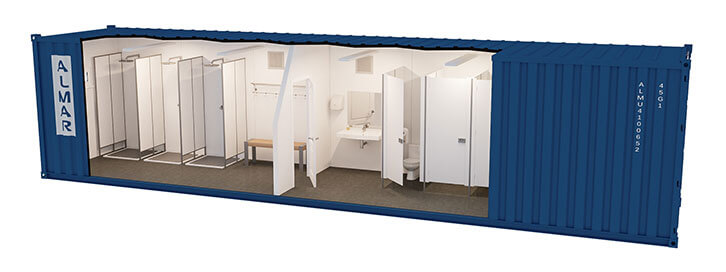
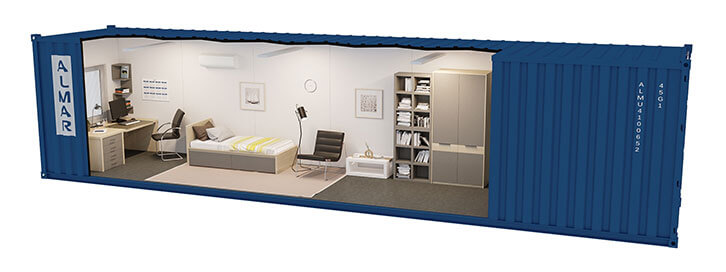
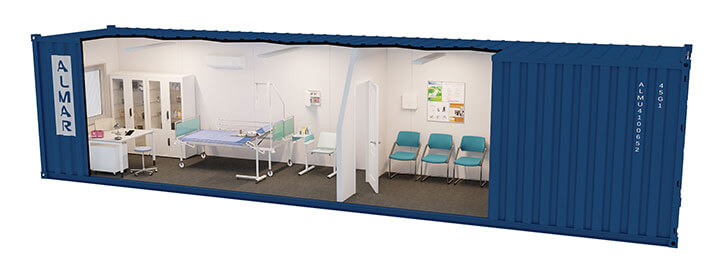



A 20ft container becomes a habitable building when we add a door and window and fit it out. Moreover being lightweight aluminium makes this a fairly easy task. The attachment points on all eight corners simplify transport by ship and rail and truck, and even cargo airplanes. As a consequence, our engineers are able to assist with these cost / time saving projects:
Qatar is building a modular, demountable soccer stadium for the 2022 FIFA World Cup. This 40,000-seater is rising from the desert immediately southeast of Doha on the Persian Gulf. The modified shipping containers sit within a steel framework creating the perimeter wall and tiered seating.
A variety of reinforced 20ft container versions and larger types will have pre-installed stairs, concessions, and bathrooms. This uses fewer materials, creates less waste, and leaves a lighter carbon footprint. They can move the Ras Abu Aboud Stadium to its first legacy location when the games are over. A renewable soccer stadium, who would have thought of that…
There was a time when steel storage containers were simply used to move cargo across vast tracts of land or between continents, and then sometimes, once they reached their destination, for continued storage of the transported goods.
Today, storage containers, which are also commonly known as dry freight shipping containers, have a multitude of uses from retail outlets, workshops, and offices, to clinics, and even stylish upmarket homes.
While steel storage containers are essentially just boxes, if you’re considering a shipping container conversion, then you’re going to have to think out of the box!
The standard sizes of general purpose (GP) storage containers are defined by international standards that are set by the International Organization for Standardization (ISO). This includes the internal dimensions used for the design of steel shipping containers as well as external dimensions. The standards also specify minimal internal measurements for door openings.
In general terms, GP storage containers are referred to internationally as being either 10 foot, 20 foot, or 40 foot in size. The metric conversions for these dimensions are 2.991 m, 6.058 m, and 12.192 m.
The width of all these containers is the same, 8 feet or 2.438 m. The standard height is 8.5 feet or 2.591 m, with 9.5 feet/2.896 m “high cube” units adding an extra foot in height to the container.
So, there are just five sizes and they don’t provide many choices. Or do they?
The limited standard sizes of storage containers belie their versatility. This is because they are modular in character and one, two, or multiple containers may be used together for conversion projects.



Shipping containers that are designed for the storage of goods during transportation are strong, durable, and highly mobile, meaning they can be moved with ease.
When it comes to using them for conversions, storage containers manufactured for shipping have numerous advantages. Even though not originally designed for any form of conversion, they can be repurposed with ease. Furthermore, the conversion process is incredibly quick when compared to most other forms of construction.
All you need to do is consider the container as a building shell. You don’t need major foundations to support it, and so it will enable you to cut costs right from the beginning. No extensive earthworks are required either.
The fact that storage containers are modular is one of the major benefits when it comes to conversions because they can be used alongside one another or on top of other units. They are also incredibly easy to customise. They may even be used to create multiple storey buildings. You will need professional input, and the conversion will need to meet local building regulations, but site work and basic structural work are simplified.
The beauty of steel shipping storage containers is that they can be used as-is for storage, or they can be repurposed to meet any specifications.
We have new and used containers that can be used for just about anything, from accommodation to ablutions. We also offer converted shipping containers that are ideal for on-site use, particularly in remote locations.
Call us today to see how we can help with the storage containers we have in stock.
Whether you need a temporary office on a building site or a well-equipped office in a remote location, shipping containers provide an ideal solution. Made of strong, sturdy steel, they are available in several different sizes offering limited options for mobile offices.
The concept of mobile offices is one that appeals to any business that requires on-site facilities for a limited period of time.
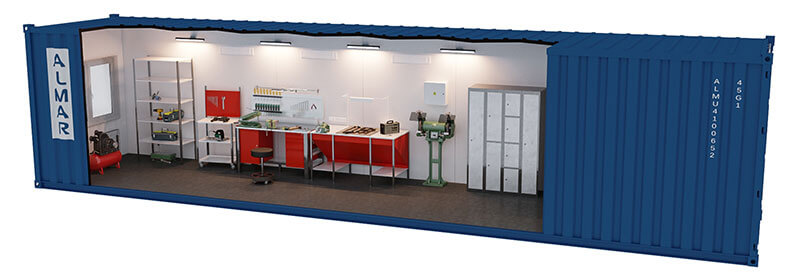
The biggest advantage of using shipping containers for mobile offices is that they may be used to provide instant office space anywhere. Conversions are quick and easy, and the full range of finishes will produce anything from a budget office set-up to bespoke designs that incorporate ablutions, conference rooms, and first aid facilities.
Other advantages include:
Shipping containers provide a shell for mobile offices. What you do with that shell depends on your needs and budget.
Generally, a single container – usually either a 20-foot or 40-foot unit – is the unit of choice. Both of these are only 2.438 m wide, which determines how the office is laid out. But with imagination and creativity, multiple desks and workstations can be accommodated.


Since mobile offices are created in a factory environment often thousands of kilometres away from the final (albeit temporary) destination, it is just as simple to double up on space by using two containers side-by-side to give added width. Alternatively, they may be stacked to create a double storey arrangement.
Almar has more than 25 years experience in the container industry and we pride ourselves on the practical, cost-effective solutions we are able to provide in Africa and the Middle East.
Our in-house engineers and experienced designers are ready to make your ideas a reality that will meet your own very specific needs. We will customize your mobile offices with shelving, carpeting, electrical points and lighting fixtures, and security features. You decide whether you need insulation and air conditioning and/or heating.
Shipping containers are ideal for ablution units in remote locations, for construction sites, or even as bathroom facilities at camping and other outdoor venues, both permanent and temporary.
Ablution containers may be customized, assembled in the factory, and then delivered to site in a lot less time than it takes for a container that is to be converted for accommodation or for office space.
They are self-contained and the size is perfect. If you need more toilets, urinals, basins, or showers than you can fit into one container, you can utilize two or more, separating them for use by either men or women. They may even be designed to fit alongside each other with access between the container units.
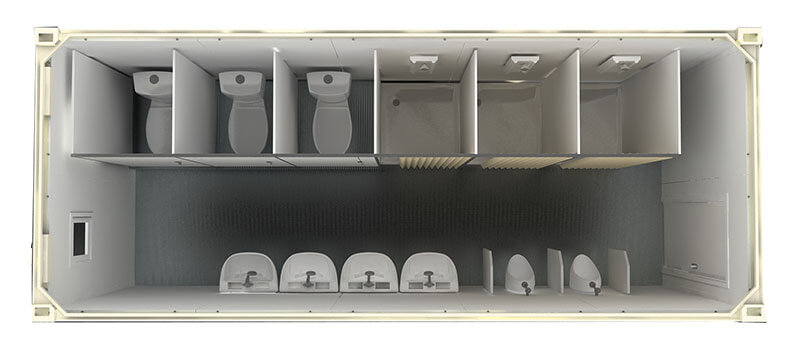
Ablution containers are usually converted from general purpose shipping containers that are used for dry freight or storage. These come in three standard sizes:
The 20-foot and 40-foot containers are also available as high cubes which are 2.896 m high.
All these sizes are suitable for conversion to toilet ablution facilities.
Like any container conversion, ablution containers are designed with doors and windows to create light and bright spaces that may be cleaned easily. The steel is cut to accommodate the openings that are then fitted and welded in place. These commonly have aluminium frames which are lighter than mild steel.
Internal cladding is fitted and then either painted with a good quality product that can be scrubbed, or tiled. Hygienic, easy-to-clean flooring is fitted over the existing container floor. When mirrors are included, this adds visual space to the ablution container.
Unless the containers are new, the outside of converted ablution containers should be given a good quality rust-proof coating prior to painting the exterior.
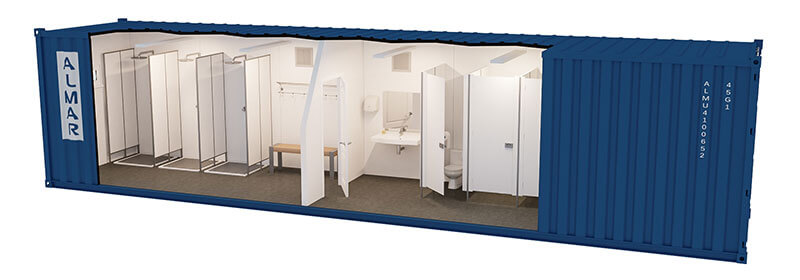
Of course, the most essential elements for ablution containers are electrics and plumbing. For this reason, plumbing is integrated into the design as is the electrical fuse board. Power sockets and lights are fitted in the factory environment, prior to shipping. So, when the unit is delivered, the electric wiring is easily connected to the electrical connection and the plumbing pipes and fittings are connected to the sewer and mains water. In some remote location where mains water is not available, tanks are used. Chemical toilets may be used if it is not possible to connect to a sewer.
The size of the shipping container used will determine how many toilets and/or urinals may be included in the design. Of course, if separate toilet cubicles with doors are to be incorporated this will affect the design dimensions. Urinals and basins are not commonly sited in cubicles.
When customers opt for unisex ablution containers, the container is divided by an internal wall and separate doors are installed, one for men and one for women.
Almar’s shipping containers are strong and secure and they may be converted into just about anything from homes with en-suite bathrooms to stand-along ablution facilities. They are ideal for remote locations were the best solution is a plug-and-play design.
If you need ablution containers in South Africa, Kenya, or in the Middle East, contact us to see how we can help you.
Steel shipping containers are all much of a muchness – sturdy boxes designed to transport and store every possible type of freight.
There are, of course, containers for different purposes, like those for dry freight or storage, and reefers that are manufactured specifically for the storage and transportation of refrigerated goods. There are also specialised containers that are intended for shipping unconventional or oversized cargo.
But container design takes on a whole new meaning when it comes to conversion products. Today, storage containers are not only used to transport and store goods, they are also used in the construction industry to form a basic shell for houses and apartments, and for on-site facilities, as well as to provide sleeping and office accommodation, conference or training rooms, and clinics and medical facilities in remote areas.



All containers must be designed and manufactured according to very specific international standards set by the International Organization for Standardization (ISO).
General purpose (GP) dry-freight containers are most commonly used for conversion purposes, and they must be manufactured and tested according to ISO 1496-1 : 1990 (E), Series 1 freight containers – Specification and testing – Part 1: General cargo containers for general purposes. The scope of this standard covers GP containers that are totally enclosed and suitable for international conveyance by sea, road, or rail. They may be:
The standard specifies the internal and external dimensions of GP containers as well as the relevant tolerances. There are also specifications for corner fittings, the structure of the base of each unit, as well as end structure, side structure, walls, and door openings.
General container design requirements state that containers must be capable of fulfilling certain requirements, including:
Testing procedures are also detailed in ISO 1496-1 : 1990 (E) including a test for stacking a fully loaded container, lifting a container from the four top corner fittings, and another for lifting a container from the four bottom corner fittings. There are also procedures for a further 10 tests, to test longitudinal restraint, the strength of the end walls, side walls, and strength of the roof, as well as floor strength, transverse and longitudinal rigidity, “weatherproofness”, and for lifting from fork-lift pockets and from the base at grappler arm positions where these are fitted.
These strict design requirements ensure that containers are strong, secure, and long lasting, making them ideal, not only for transportation and storage purposes but for container conversions as well.
The use of steel dry freight GP shipping containers for architectural structures is as varied as the types of cargo they may be used for. They have been used for bespoke shops, offices, and designer homes. Ingenious designers have turned single units into reception areas, booths for parking attendants, coffee shops, hairdressing salons, and getaway retreats. More challenging designs incorporate multiple containers that are sometimes stacked or angled to create living or office space.
A Canadian company has caused a stir by repurposing used containers for hot tubs and swimming pools! These may be installed either below or above the ground.


Almar offers the full range of container solutions for storage and transportation, including reefers and specialized containers. We also supply plug and play container solutions for workshops, clinics, accommodation, offices, ablution blocks, and training rooms that we often supply to remote regions in Southern and East Africa as well as the Middle East.
All our containers meet ISO specifications, and those we convert are handled by our in-house engineering team and container design experts. How can we help you?
There is no doubt that the popularity of steel shipping containers for offices and accommodation is growing rapidly. But are container conversions prices really a lot less than the costs involved in traditional construction methods?
Generally, shipping container conversions are cost-effective and they are a lot quicker to complete than traditional structures, particularly buildings made with bricks or blocks and mortar. They don’t require extensive foundations and are particularly useful on sloping land where traditional housing becomes expensive. So yes, shipping container conversions prices are lower than regular buildings – unless the finishes and fittings used are very expensive.
They also have their own unique advantages.
For instance, steel shipping containers are exceptionally strong and durable and will last a very long time. They are generally resistant to fire, mould, and bugs like termites which is favourable when assessing container conversions prices.
Units can be converted in a factory and delivered to site for completion. This might include cladding and roofing as well as connection to water supply and electricity. It can take as little as three weeks to fabricate in a factory environment. Completion time will depend on the complexity of the design and whether steel reinforcement and/or welding is required.



The first of London’s famous container cities was erected in the Docklands in 2001, and it took only five months for the developers to complete 12 work studios in the three-storey structure. Soon after, a fourth floor comprising apartments and studios was added.
Another of the advantages of using shipping containers for housing is that, because they are modular, they allow for flexibility and avant-garde creativity. They can be placed alongside one another or stacked, and sides can be removed to increase the dimensions of spaces. Also, it is very easy to combine containers with traditional building materials. Obviously, the more containers that are incorporated in the design, the higher the total shipping container cost will be. But then incorporating traditional building materials will also increase cost, not just of the materials but of on-site labour too.
It is possible to cut costs even more by using old steel shipping containers, although many companies that specialize in container conversions prefer to use new units. That will, of course, also increase the shipping container cost. It is worth noting that London’s Container City was constructed from recycled containers, and recycled materials made up 80 percent of the total building materials used. This reduced the container conversions prices dramatically.
Old shipping containers are often dented and there may be some rust. They might affect their structural integrity. If they have been coated with lead-based paint to protect them from saltwater these surfaces will have to be covered for safety. It is, though, usual for designers to incorporate a new floor, ceiling, and both internal and external wall cladding in converted containers.
It can be difficult to fit extensive heating and cooling systems in shipping container buildings. But if insulation is included at the outset, this needn’t be a problem.
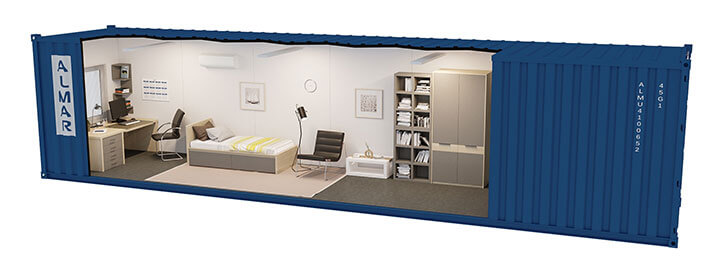
There are a growing number of construction companies in southern Africa that specialise in shipping container conversions. Most will deliver the partially finished containers to the site and then complete the building on site. So the basic shell can be assembled in just one day, while the finishes will take about three months, depending on the design.
Some provide “plug & play” options that may even include furniture. The container building is delivered to site and simply has to be connected to the services including water and electricity.
Almar Container Group offers “plug & play” solutions that are popular for office and accommodation use, particularly in remote areas of Africa and the Middle East. The company also supplies containers to construction companies that specialise in container conversions, including those that manufacture up-market dwellings. Call us today to see how we can help you.
Robust and modular, steel shipping containers are strong and secure and ideal for a range of uses from transportation and storage to workshops and clinics. Because they are easy to move, container offices are also great for remote locations whether they are planned as permanent or temporary structures.
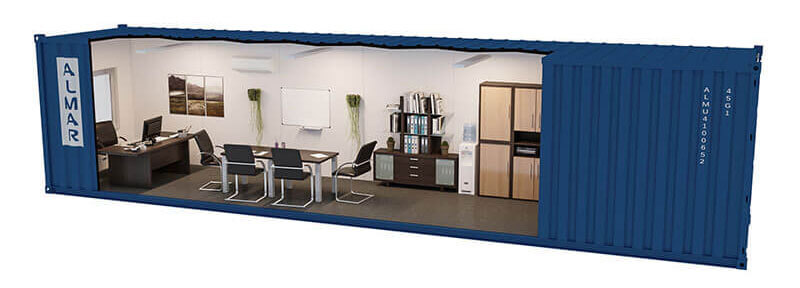
The most obvious benefit of container offices is that they are generally cheaper to construct than either bricks-and-mortar or even steel or timber frame structures. Experience shows that it is possible to save as much as 60 percent by using shipping containers for offices and office complexes. That said, like every other type of structure, the final cost will depend largely on fixtures and fittings, as well as the cladding and insulation (if any) used. Obviously, doors, windows, plumbing, electric wiring, paint, and other features will all add to the cost. But a basic structure will always come in a lot less than any other type of office building.
Customized design is an advantage that goes hand-in-hand with finishes. You can decide exactly what meets your needs and customize the interior and exterior (with cladding if you wish) to create a unique office environment however luxurious or utilitarian you want it to be.
Container offices can also be put together much, much faster than traditional offices. While stacking containers to achieve two- or multi-storey buildings will take longer than just creating a single office unit with one container, so too will a multi-storey office built out of traditional materials. It’s all relative. Similarly, while finishes can add to cost, they can also add on time. For instance, if containers have to be cut and welded to form larger spaces, or multiple doors and windows need to be fitted, this will add construction time to the project. But, and this is a biggie, if the work is done prior to delivery on site then construction will still be considerably quicker, and disruption on site will be minimised. Having this kind of work done prior to delivery on site also minimises labour costs.
Another great benefit of container offices is their mobility. They can be transported to any remote site, and then moved again if the office is needed for another project. This makes them particularly popular in the building industry and in related fields.
Container offices are also eco-friendly since they are recycled and have a very limited footprint.
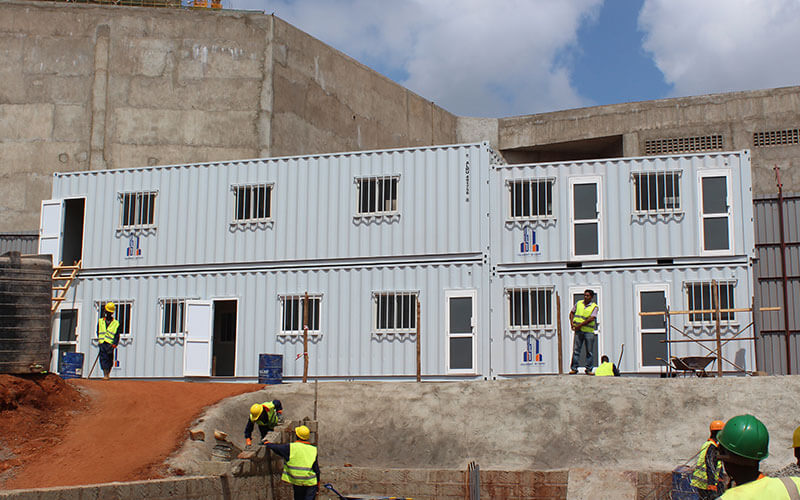
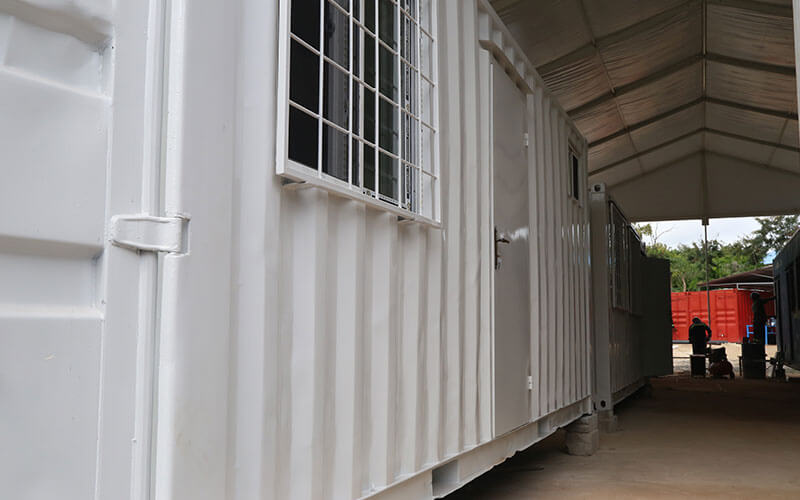
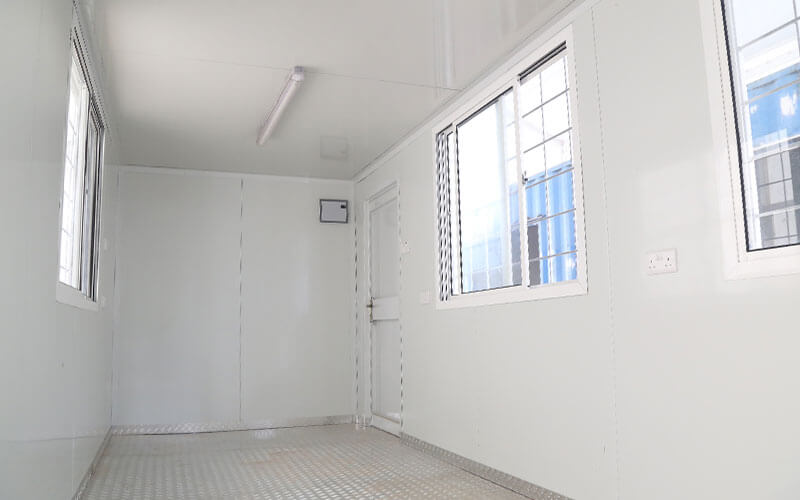
Headquartered in Durban, Almar has offices and production facilities in South Africa, Tanzania, Uganda, Kenya, and in the Middle East. We specialise in plug-and-play solutions for remote locations including office accommodation and container buildings that are suitable for medical and other facilities.
If this persuades you to literally think out of the box, contact the friendly team at Almar to find out how we can help you with your container offices. We will help you save time and money, especially if you need an office for a remote location.
There is no doubt that shipping container buildings are trending worldwide right now. People are using them for offices, shops, and homes, sometimes retaining the look and industrial feel of the insulated shipping container, sometimes stripping so much away most people would have no idea that the basic structure of the house was, in fact, a series of mobile storage units. But how do you go about building a container home, and how do you go about generating shipping container home plans?
Whether you are planning to use a dozen or more converted shipping containers or just one single unit, before you even start thinking about plans you need to familiarize yourself with local building regulations. In South Africa, for instance, the National Building Regulations require anyone building a house that does not follow standard construction principles to have an agrément certificate that confirms “fitness-for-purpose” of materials and components.
The building regulations also require a “competent person” who is essentially a person who is qualified and has the necessary experience to prepare the design (or plans). That person, usually an architect or engineer, will also have to ensure that the design meets the requirements of SANS 10400, a series of detailed documents that specify the requirements of the regulations, from structural design and foundations to glazing and fire protection, allowing for deviations specified in the agrément certificate.
If you want to buy shipping containers that can be converted, you really will need to use the services of a designer or architect who has the specialised knowledge relating to insulating and ventilating metal containers. Alternatively, you could find companies that offer shipping container homes for sale. Just check that their shipping container home plans have been drawn in accordance with the local authority bylaws and the country’s building regulations.



Whether you are planning to buy ready-converted shipping containers or simply an ISO container that was previously used for mobile storage, it’s a good idea to look at photographs of shipping container buildings as well as shipping container home plans that are available on the Internet. Even if you can’t use these as is (in most cases you will have to have existing plans redrawn, at very least to show the converted shipping containers on the required site plan), they will give you some idea of just how container homes can be configured. Existing shipping container home plans will also show you how fixtures, fittings, and furniture can be laid out.
Shipping container home plans can be drawn in so many different ways, accommodating as many containers needed, either on one or multiple levels. The plans can have containers:
The options really are endless.
Almar Container Group offers converted shipping containers that are suitable for offices, clinics, workshops, training and boardrooms, as well as accommodation facilities. We specialise in plug and play solutions for remote locations in Africa and the Middle East.
Almar has more than 25 years of experience in the container industry and has an in-house team of designers and engineers that handles all our conversions. Call us today to see what we can do for you.